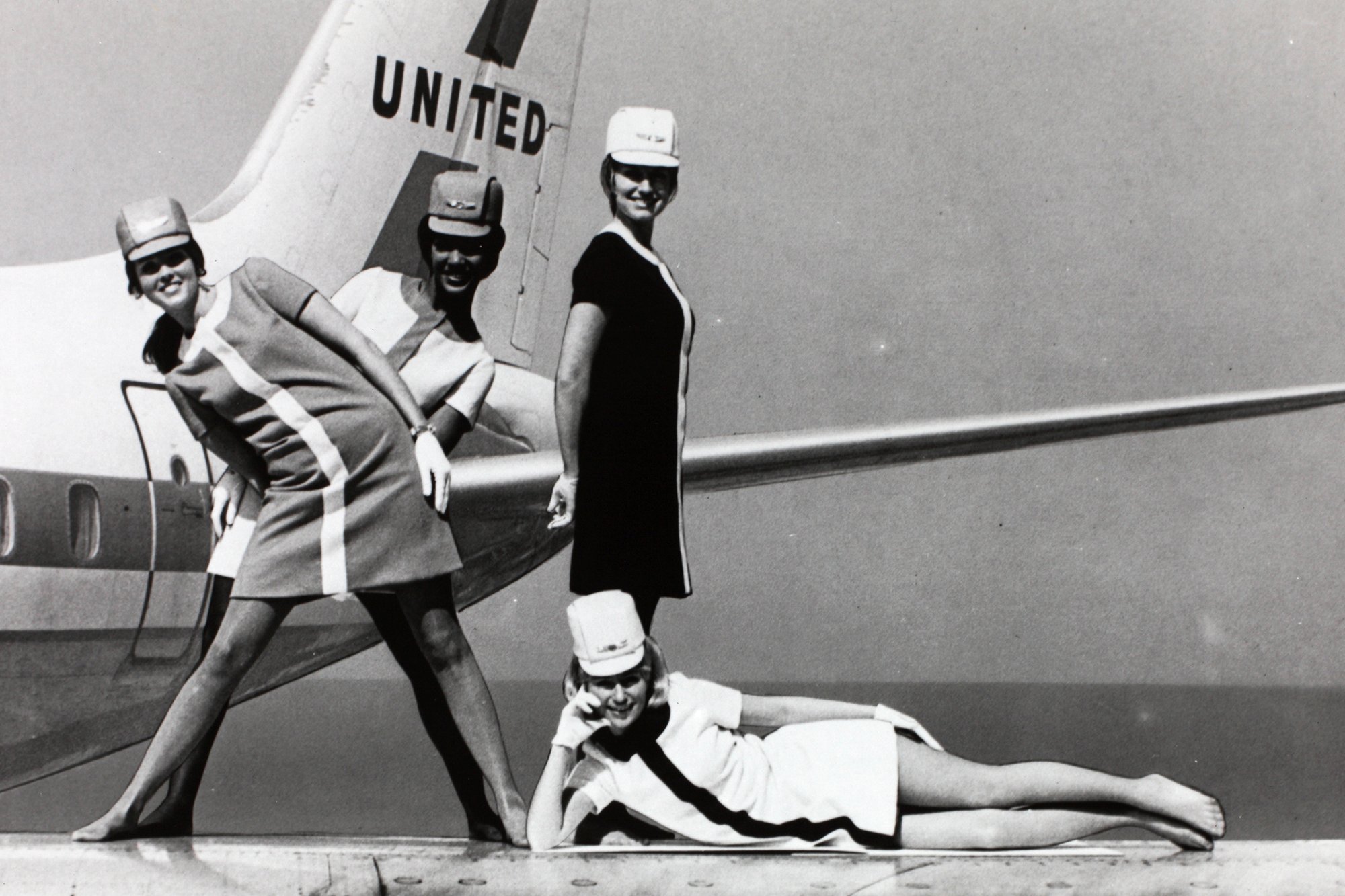The stewardess who said no
In 2021, Ukrainian budget airline SkyUp officially changed their stewardess uniforms from the typical form-fitting shirt and skirt set to a bright orange loose-fit pantsuit – with Nike Airs on their feet. This might not sound like a big deal, but considering the historically rampant sexism within the aviation industry, it is a standard-setting move.
The image of the “sexy stewardess”
The image of the “sexy stewardess” has been around for a long time, and ever present in the minds and on the screens of men everywhere, and not without reason. Though their uniforms started out more modest, flight attendants were still required to fit the beauty standards of the time – and of course to wear skirts. As we can see in this Condé Nast video demonstrating uniforms from the 30s until today, not much has changed since then: tight skirts getting shorter and shorter and high heels have remained the norm.
With feminism and gender equality being such a hot-button issue nowadays, this really begs the question: why has this norm still not changed? As for many lingering sexist or discriminatory practices, the answer lies in tradition, and profit.
The stewardess as a marketing tool
Already in the 60s, stewardesses could get fired for gaining weight, getting married, or just turning 35 – apparently too old for the job. The emphasis put on their appearance and grooming was about as significant as that put on safety and evacuation. This was quite the paradox, considering the fact that these women were anything but the air-headed bimbos their employers were trying to make them out to be.
One of the founders of the ‘Stewardesses for Women’s Rights’ (SWR) union group, formed a few years later in the early 70s said: “I’ve always thought it was ironic that we have this docile image. Most of the women I know began to fly because they were just too independent and curious about the world to sit around in a nine-to-five job.”
Then, airlines in the U.S. came up with a new marketing strategy back in the 70s: to make their stewardesses the selling point. According to Nell McShane Wulfhart, who recently wrote a book titled ‘The Great Stewardess Rebellion’, “first, they dressed them in skimpy uniforms. Southwest put stewardesses in orange hot pants and go-go boots. American experimented with a Western look of tartan miniskirts and Daniel Boone-style raccoon hats. TWA designed dresses made out of paper.”
The marketing campaigns didn’t stop there – airlines then started running ads, more and more provocative, going as far as making flight attendants strip during the flight, as seen in Braniff’s ‘The Air Strip’. Some airlines would even go as far as to make their employees kiss every male passenger as they got off the plane.


The Rebellion
Unsurprisingly, this sexist and demeaning strategy – coupled with the full bar that was available on planes at the time – did not come without consequences for the flight attendants in question. They were harassed, groped and patronised.
Eventually, they had had enough – in 1972, which is when the SWR group was founded, they took to the streets, started getting media coverage of their outrage, and produced counter-commercials to try and show just how harmful the airlines’ messaging was. In the years that followed and as the group got bigger, they continued to campaign for the right to be legally treated as safety professionals – they organised boycotts of damming companies and airlines, and constantly made headlines.
Throughout the decades since, flight attendants have continued to protest the abusive behaviours of passengers and their poor working conditions, and yet we still find ourselves with an industry in which most airlines still enforce sexist uniforms and male passengers still feel it appropriate to harass stewardesses. Just this past summer, a Frontier Airlines passenger was duct-taped to his seat by flight attendants after drunkenly groping two stewardesses.
Even though we are clearly far from reaching an acceptable state of affairs, this is exactly why the decision by SkyUp is an important one – we need more airlines to send the message that they will not continue to perpetrate the sexism that has been a defining aspect of this industry for decades. Instead, we need them to take a stand and be a part of this long overdue change.
We at ellectric are always interested in the issues that women in mobility have faced and continue to face – but we also want to cover their accomplishments. In both cases, we believe women should have more visibility and be given more space within the mobility industry. If you want to find out more, check out our newly created ‘her drive’ subcategory, and our oldie but goldie ‘5+1’ section.

